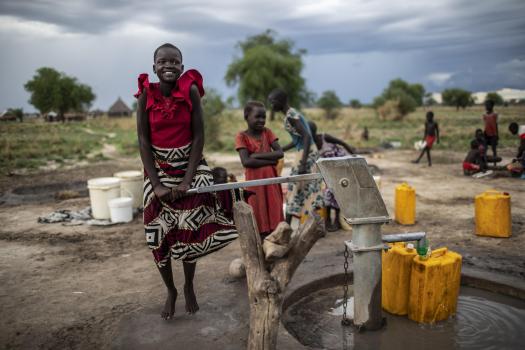In the face of major shocks, including Russia’s invasion of Ukraine, the climate crisis, and the COVID-19 pandemic, USAID’s Water for the World Initiative work has never been more important. In times like these, photos capture the moments that inspire us to stay determined so all families have access to safe drinking water, sanitation, and hygiene.
These photos help tell the story of what USAID does every day to advance Water for the World – whether that’s promoting sustainable water resources management, improving access to safe water services, empowering women, or investing in research and innovation. Our 2022 Photo Contest exemplified all of this and more.
Across our partners, we received more than 40 photos showing how USAID is working around the world to build a water secure future. While families around the world are facing incredible challenges, these photos show how we’re working with our partners so communities can withstand these challenges and bounce back to thrive.
Take a look at the winners of our 2022 Water for the World Photo Contest.
First Place
Collecting Well Water in South Sudan

Girls fetch water at a borehole in Chabar, Duk County, Jonglei State, South Sudan. Nearby access to wells has improved water security for all, but especially for young girls. Before the Chabar well existed, families did not feel comfortable sending girls long distances to collect water, fearing abductions by other ethnic groups.
As part of the Resilience and Food Security Program led by Catholic Relief Services (CRS), community-based pump mechanics are provided with access to tools and trained to repair and maintain wells left damaged after floods submerged countless wells across the state of Jonglei last year. By strengthening resilience within households and communities, the program also helps to reduce the expectation of, and dependence on, relief assistance.
Second Place

This 9 year old washes his hands during a hygiene promotion session in El Miskin Extension Camp in Nigeria. Since 2016, USAID has reached over 118,000 people through hygiene promotions such as this one.
Catholic Relief Services, with the support of USAID, is assisting vulnerable communities that have been displaced by fighting with services such as hygiene promotions to encourage proper hand washing, safe water supply sites, ventilated pit latrines, emergency shelters, female hygiene kits, and more. These services save lives by lowering instances of diarrhea and other sicknesses and diseases, as well as reducing the severity of malnutrition. Because these services boost health and safety, displaced civilians can attempt to rebuild their lives with the goal of one day returning home.
Third Place

Two girls enjoy a refreshing and safe glass of water in their village in southwest Bangladesh. Previously, drinking water was scarce due to high levels of groundwater salinity. The children often drank water from a local pond causing them to fall sick with diseases like diarrhea. Through USAID’s Nobo Jatra project, in collaboration with communities, improved water points have been installed, such as reverse osmosis water plants. These plants remove impurities, ensuring that communities have access to clean safe drinking water all year round. Best of all, each month, the plants provide access to safe drinking water to over 18,000 households leading to improved health and wellbeing.
Honorable Mentions
Forecasting with Hydrometeorology

Women Leaders in Water Security

Related resources:


